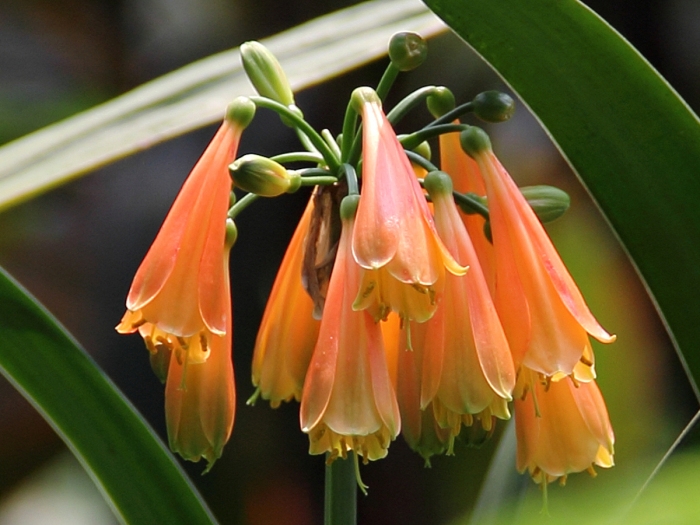Green-Tip Forest Lily
(Clivia nobilis)
Green-Tip Forest Lily (Clivia nobilis)
/
/

Fan Wen
CC BY-SA 4.0
Image By:
Fan Wen
Recorded By:
Copyright:
CC BY-SA 4.0
Copyright Notice:
Photo by: Fan Wen | License Type: CC BY-SA 4.0 | License URL: https://creativecommons.org/licenses/by-sa/4.0 | Uploader: Fanwen619 | Publisher: Wikimedia Commons | Title: Clivia_nobilis-flower_view.jpg | Notes: {{Information| |Description = Der Fotografin unbekannte Pflanze, Cali / Kolumbien |Source = selbst fotografiert |Date = created 24. March 2005 |Author = Louise Wolff --~~~~ |Permission = |other_versions = }} {{GFDL-self}} |




















Estimated Native Range
Summary
Clivia nobilis, commonly known as Green-Tip Forest Lily, is an evergreen perennial bulb native to the understory of damp woodland areas in Eastern South Africa. It typically grows to about 38 cm (15 inches) in height and is characterized by its dark green, strap-shaped leaves. Clivia nobilis produces pendent umbels of narrow, trumpet-shaped flowers that are red and yellow with distinctive green tips, blooming mainly in winter to early spring. The flowers are quite showy and make it a popular ornamental plant.
The Green-Tip Forest Lily is valued for its ability to thrive in low light conditions, making it an excellent choice for indoor cultivation in temperate regions where it is grown as a houseplant. It requires a minimum temperature of 10 °C (50 °F) and does not tolerate frost. It has received the Royal Horticultural Society’s Award of Garden Merit, indicating its excellence for garden use. In cultivation, it prefers full shade or partial shade, consistent medium moisture, and well-draining soil. While it is relatively low maintenance, it can suffer from root rot if overwatered and is susceptible to mealybugs and scale insects. Clivia nobilis is not typically invasive but should be kept away from direct sunlight to avoid leaf scorch.CC BY-SA 4.0
The Green-Tip Forest Lily is valued for its ability to thrive in low light conditions, making it an excellent choice for indoor cultivation in temperate regions where it is grown as a houseplant. It requires a minimum temperature of 10 °C (50 °F) and does not tolerate frost. It has received the Royal Horticultural Society’s Award of Garden Merit, indicating its excellence for garden use. In cultivation, it prefers full shade or partial shade, consistent medium moisture, and well-draining soil. While it is relatively low maintenance, it can suffer from root rot if overwatered and is susceptible to mealybugs and scale insects. Clivia nobilis is not typically invasive but should be kept away from direct sunlight to avoid leaf scorch.CC BY-SA 4.0
Plant Description
- Plant Type: Bulb
- Height: 1-2 feet
- Width: 1-2 feet
- Growth Rate: Slow
- Flower Color: Green, Orange, Red, Yellow
- Flowering Season: Spring
- Leaf Retention: Evergreen
Growth Requirements
- Sun: Part Shade
- Water: Medium
- Drainage: Medium, Fast
Common Uses
Bee Garden, Bird Garden, Butterfly Garden, Hummingbird Garden, Low Maintenance, Potted Plant, Showy Flowers
Natural Habitat
Understory of damp woodland areas in Eastern South Africa
Other Names
Common Names: Kafferlilja
Scientific Names: , Clivia nobilis, Haemanthus cernuiflorus, Himantophyllum aitonii, Imatophyllum aitonii, Imatophyllum maximum,
GBIF Accepted Name: Clivia nobilis Lindl.